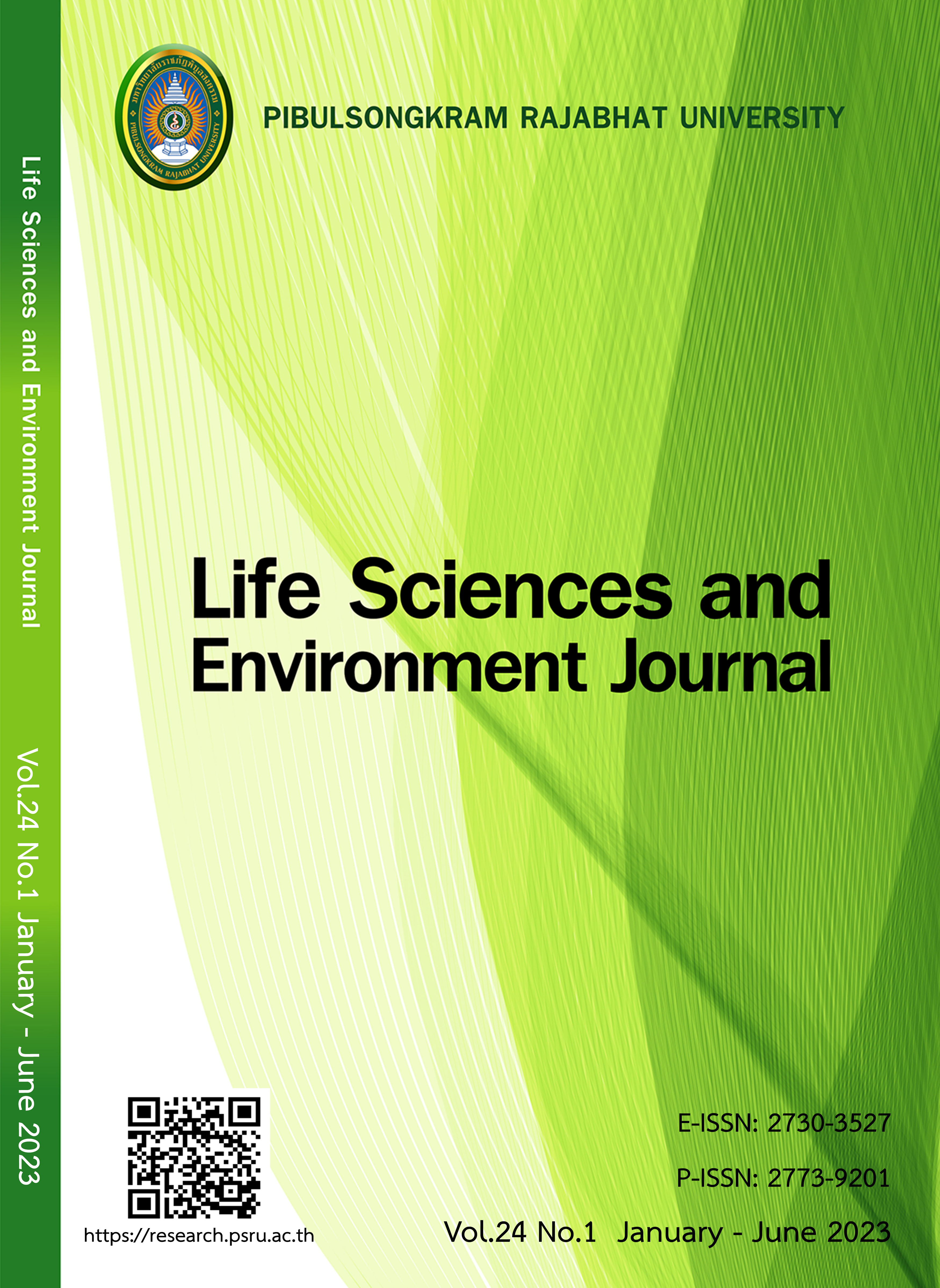TIME SERIES MODEL FOR FORECASTING THE QUANTITY OF THAI GLUTINOUS RICE FLOUR EXPORTED TO CHINA
DOI:
https://doi.org/10.14456/lsej.2023.11Keywords:
Box-Jenkins, Simple exponential smoothing, Forecasting, Glutinous rice flour, Time seriesAbstract
The objective of this research was to fit a forecasting model for the quantity of Thai glutinous rice flour exported to China. Statistical method used in this research was time series analysis and forecasting. The data used in this research were monthly data on the quantity of Thai glutinous rice flour exported to China from January 2016 through June 2022. The graph of time series data showed that these data had no seasonal pattern and their mean changed slowly. Therefore, the forecasting methods used in this research were the simple exponential smoothing technique and the nonseasonal Box-Jenkins method. Time series data were divided into two datasets. The first dataset was the first 72 observations which were used to fit the forecasting model. The results revealed that the MA(1) model derived from the Box-Jenkins method was the appropriate forecasting model. It had root mean square error less than the model derived from the simple exponential smoothing method. The second dataset was the last six observations used to evaluate the accuracy of the appropriate forecasting model using mean absolute percentage error. The result showed that the MA(1) model was the reasonable forecasting model.
References
Brockwell PJ, Davis RA. Introduction to time series and forecasting, 3rd ed. Switzerland: Springer; 2016.
Department of Trade Negotiations. News, 2020. Available at: https://dtn.go.th/th/home. Accessed June 15, 2022.
Hyndman RJ, Athanasopoulos G. Forecasting: Principles and practice, 3rd ed. Available at: https://otexts. com/fpp3/. Accessed August 21, 2022.
Keerativibool K. Forecasting model for the export value of Thai jasmine rice. Burapha Science Journal 2014;19(1):78-90.
Klimberg RK, Sillup GP, Boyle KJ, Tavva V. Forecasting performance measures–what are their practical meaning?. In Lawrence KD, Klimberg RK. (Eds.), Advances in Business and Management Forecasting, vol. 7. United Kingdom: Emerald; 2010: 137-147.
Kotasueb S, Boonlha K. Construction of model for the price of Thai jasmine rice 105. Science and Technology Nakhon Sawan Rajaphat University Journal 2016;8(8):49-60.
Lewis CD. Industrial and business forecasting methods: A practical guide to exponential smoothing and curve fitting. Boston: Butterworth Scientific; 1982.
Manmin M. Time series and forecasting. Bangkok: Four-printing; 2006.
Mgronline. Thai glutinous rice flour takes 99% of market share in China. Available at: https://mgronline. com/business/detail/9660000022359. Accessed March 19, 2023.
Ministry of Commerce. Principal exports by destination. Available at: https://tradereport.moc.go.th/ TradeEng.aspx. Accessed July 7, 2022A.
Ministry of Commerce. Exports structure. Available at: https://tradereport.moc.go.th/TradeEng.aspx. Accessed July 7, 2022B.
Moliphan T, Banditvilai S. Forecasting the export values from Thailand to China by decomposition method, smoothing method and Box-Jenkins method. Thai Journal of Science and Technology 2021;10(1):26-41.
Rungjindarat N, Thatsakaniwet S. Time series forecasting with classical decomposition method: Jasmine rice exportation of Thailand. Dusit Thani College Journal 2019;13(2):283-293.
Downloads
Published
How to Cite
Issue
Section
License
Copyright (c) 2023 Life Sciences and Environment Journal

This work is licensed under a Creative Commons Attribution-NonCommercial-NoDerivatives 4.0 International License.
Each article is copyrighted © by its author(s) and is published under license from the author(s).










